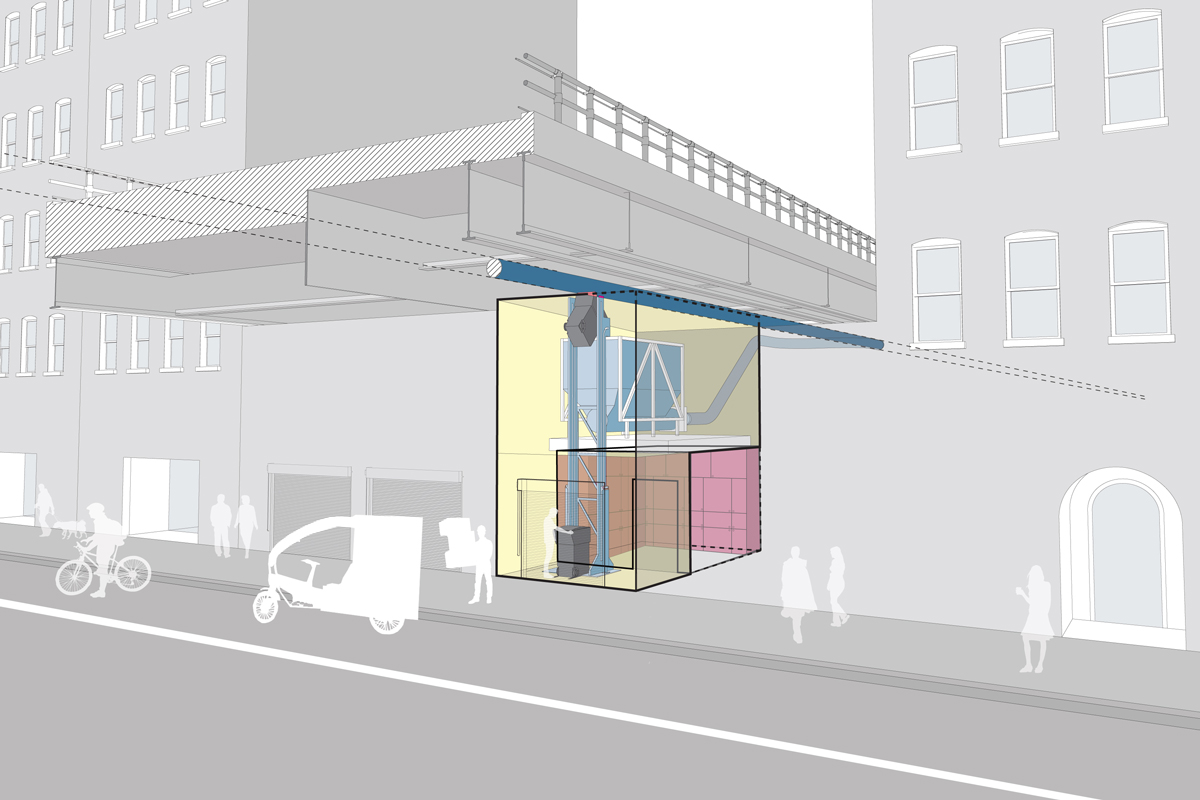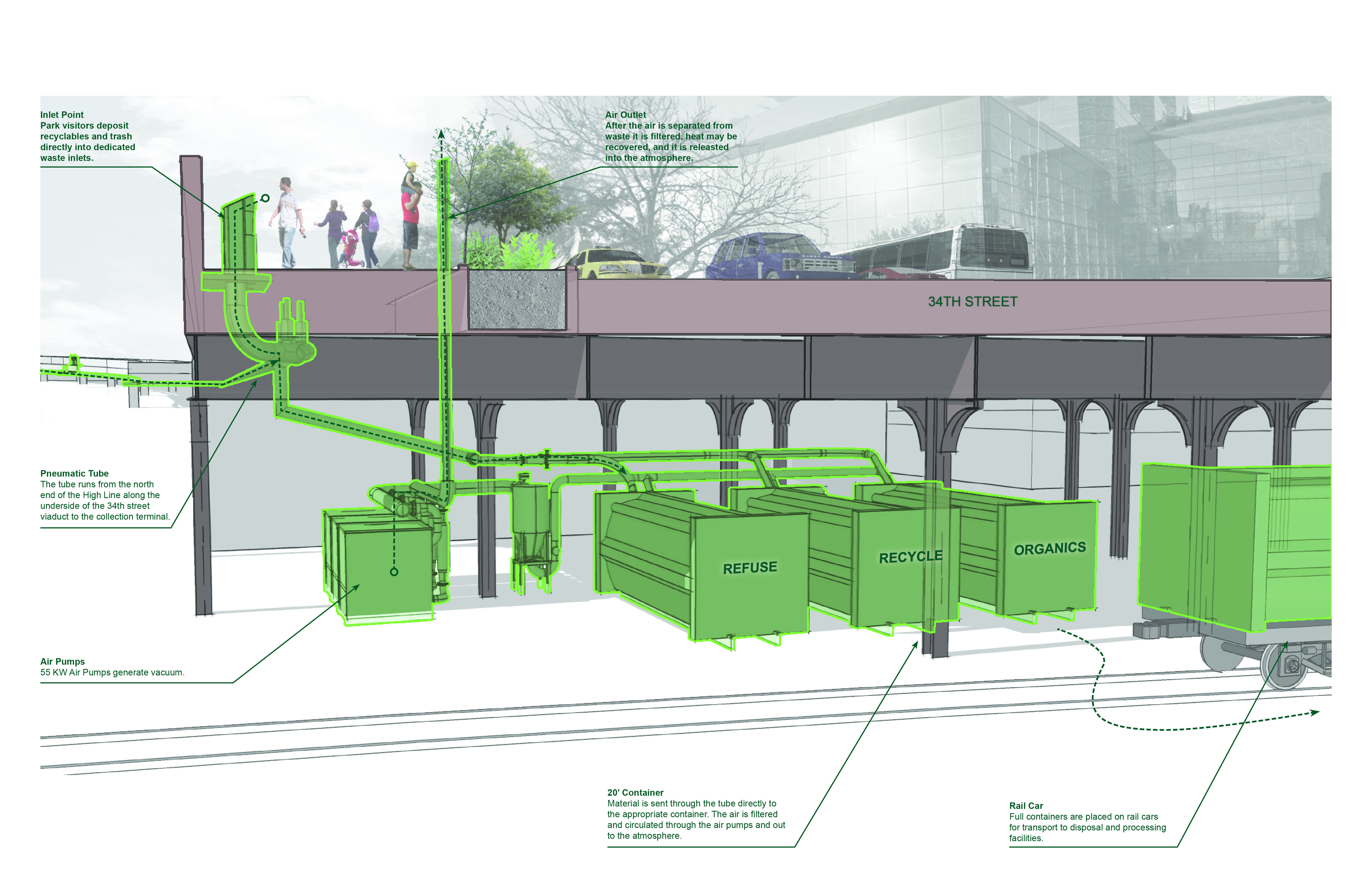
Every day, trucks rumble through the streets of New York to collect over 20,000 tons of garbage.1 90% of this trash is then hauled to remote landfills by trucks and trains traveling up to 600 miles round trip.2 This remote-disposal system costs nearly $400 million and produces about a million metric tons of greenhouse gas emissions every year.3 The separate collection of recycling and food waste multiplies the number of trucks needed for this–worsening congestion, noise pollution, and air quality–but the alternative, eliminating recycling, would do even more environmental harm. We need an alternative to this truck-based status quo.
We propose a pneumatic collection system: a network of pipes that use negative air pressure to send waste to a central collection point for transportation to processing or disposal facilities. These systems have been successfully used in Europe and Asia for more than 50 years and in New York, on Roosevelt Island, since 1975. While most networks are installed in new developments—as is planned for Hudson Yards at the northern end of the High Line—it is also possible to retrofit whole neighborhoods using existing transportation infrastructure, such as subway tunnels and viaducts, to reduce installation costs.

Pneumatic tube-to-rail terminal, Image: Greta Ruedisueli
The High Line Corridor Pneumatic Initiative imagines such a system along the High Line: a 12” tube strapped to the viaduct collecting separate streams of refuse, recycling, and organics from the park and adjacent buildings. The waste would be collected and compacted in containers that could be lifted directly onto railcars to eliminate the need for truck transport. A separate network of two-inch pneumatic pipes would also convey food waste directly from restaurant kitchens to a micro-anaerobic digester located adjacent to the High Line, where it would be converted to energy and fertilizer for local use.
Disposing our waste is a wasteful process—it’s time we make it more efficient.
This proposal could extend the benefits of pneumatic collection to a swath of the Far West Side well beyond Hudson Yards by offering service for buildings and street-level litter bins along the High Line corridor, as well as for the park itself. It would demonstrate new ways that pneumatic collection could be used, with direct rail transfer, direct loading of on-site micro-anaerobic digesters, and the use of shared inlets to receive waste from neighborhood litter bins and non-adjacent buildings. Most importantly, it would demonstrate the feasibility of piggybacking on existing linear infrastructure to avoid the need for tunneling, which could lower the barriers for retrofit installations across the city.
If we want to meet our ambitious goals for public space, safe streets, and greenhouse gas emissions we need to design cities for waste flows. Once we perceive the benefits of efficient collection, we might wonder how we ever did without pneumatic tubes.
–